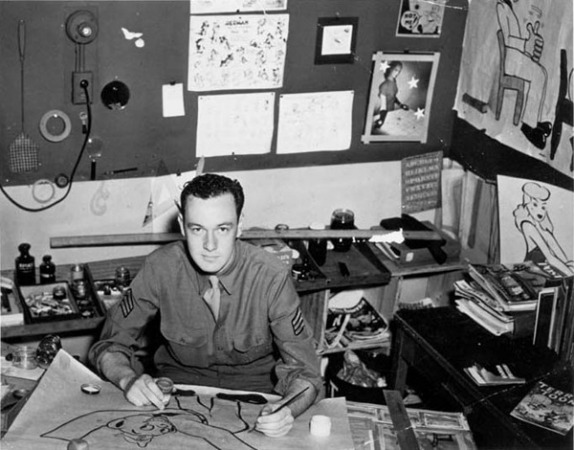Remembering Stan Lee // December 28, 1922 - November 12, 2018
It’s hard to think of Marvel Comics and not think of Stan Lee. For better or worse, once the movement of Marvel Comics took off in the 1960s and 1970s, Stan Lee was at the helm of Marvel as head editor--and the face of the company. However, as always, the truth is more complex.
Stan Lee began at Timely Comics, Marvel’s predecessor, as an assistant to various creators at the time. He’d been recommended by family, it seems, as his cousin Joan was also the wife of Martin Goodman, who owned Timely. It was Captain America co-creator Joe Simon who did the actual hiring, though, and Stan embraced the work wholeheartedly.
Stan’s first work published was actually a prose story of Captain America published in the character’s third comic. However, he did invent the concept of Cap throwing his new rounded shield as a weapon. It was also the first time that Stan went by his pen name rather than his birth name of Stanley Martin Lieber…and he was only 17, having graduated from high school just a few months prior. When Captain America’s creators Joe Simon and Jack Kirby (also higher up in Timely than Stan) left in 1941, Stan became editor for the first time.
After World War II, when comic sales in general began to slow and superheroes were no longer popular, Stan did his best to keep hiring the best talent he could. According to Sean Howe’s Marvel: The Inside Story, Stan often bought stories off his friends in the industry to keep them employed, putting them into a file cabinet for future use. When publisher Martin Goodman found out about it, times became even tougher, as those stories were pushed into use instead.
When Martin Goodman came to Stan about making a superhero comic, though, that is where Stan began his rise to what can only be considered immortality.
Together with legend Jack Kirby, the two would hedge their bets on making a superhero comic. Monster comics were still incredibly popular, with horror having fallen by the wayside in recent years thanks to the Comics Code Authority, so Stan and Jack made the first cover about a set of adventurers fighting a monster. They fought, they quarreled over little things, they had money concerns. It was a family, rather than a group of superheroes. It wasn’t until the third issue when Stan Lee and Jack Kirby revealed that the book was intended to be a superhero book: The Fantastic Four.
In fact, it was with Jack Kirby that the two created the vast amount of Marvel’s older characters: the Hulk, Iron Man, Thor, and the X-Men. Stan had other collaborators, though. Daredevil was co-created with Marvel mainstay Bill Everett, who, in earlier years, had also created Namor, the Sub-Mariner. Steve Ditko, another legend lost to us recently, co-created both Doctor Strange and Spider-Man with Stan. While arguments as to whom deserves the most credit will likely go on into infinity, the simple truth remains that, if these characters still existed without Stan Lee, they likely would not be recognizable. Stan also made the call to revive popular characters Namor the Submariner and Captain America from their proverbial limbo.
While Steve Ditko is a master of the printed page and tells compelling stories without dialogue, Spider-Man almost certainly would not have been a wisecracking smartass in combat. The romance angle was also almost nonexistent in a lot of Ditko’s early stories, though he does tend to get sole credit for the creation of Gwen Stacy, as Stan even remarked a few times that it wasn’t something he’d thought of. It’s very likely that this sort of give-and-take is true of all of Stan’s co-creations, especially as Marvel continued to publish book after book with Stan as the head writer.
Stan Lee arguably became the immortal character of “Stan Lee” once he rose up to head publisher of Marvel in 1972. At that point, while he still had some creative control, his focus shifted to marketing the dickens out of Marvel. The Incredible Hulk TV show, a Spider-Man experimental rock album with spoken segments by Stan himself, the list of bizarre experiments go on and on. Stan’s Soapbox became an everlasting piece of Marvel during the 1970s as well, using Stan’s ability to hype as a way for Marvel to push new projects and give the reader the impression that they were in on the “secret” that was Marvel.
Stan would never really stop promoting the company he helped re-create in the 1960s. He would narrate the openings of cartoons of Marvel properties in the 1980s. He would even have his first-ever cameo in a Marvel product during the 1990s Spider-Man cartoon, starring as himself meeting Spider-Man during the finale (amusingly, he would also hit on Madame Web, beautifully played by his wife, Joan). And, of course, Stan would show up in nearly every Marvel movie ever made, from the 2000’s X-Men movie onward (though he was almost in 1998’s Blade). Stan’s movie cameos themselves are also somewhat controversial, as he didn’t necessarily have a hand in creating several movie-featured characters. By this point, however, Stan had become synonymous with Marvel, so it becomes easier to brush aside.
Regardless of if you view Stan as a thief who stole unwarranted credit, or a genius whose works are underappreciated in the modern day, or anywhere in between, Stan Lee is a comics legend and his passing is a loss for us all. At the very least, the comics world has lost its most vocal and bombastic supporter, and that alone is worth remembering.





